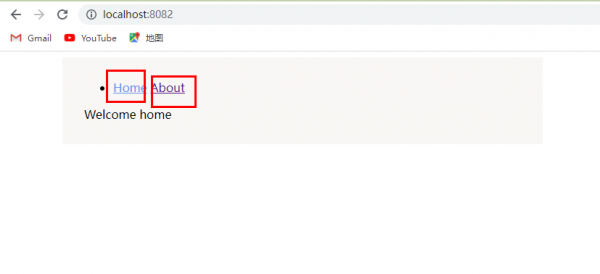创建带路由的Vue2项目
来自CloudWiki
目录
背景
Vue项目基本上是单页面应用,在不同的组件间跳转需要路由。
准备工作
下载项目
一个麻雀虽小但是五脏俱全的客户端路由器 ,
可以在 Github 上下载:https://github.com/chrisvfritz/vue-2.0-simple-routing-example
下载完后,解压该目录,重命名目录为 vue-demo,vu 并进入该目录,执行以下命令:
# 安装依赖 npm install
目录结构
为方便和之前的项目对接,项目目录改成如下的目录结构:
基本版
components/VLink.vue
<template>
<a
v-bind:href="href"
v-bind:class="{ active: isActive }"
v-on:click="go"
>
<slot></slot>
</a>
</template>
<script>
import routes from '../routes'
export default {
props: {
href: {
type:String,
required: true
}
},
computed: {
isActive () {
return this.href === this.$root.currentRoute
}
},
methods: {
go (event) {
event.preventDefault()
this.$root.currentRoute = this.href
window.history.pushState(
null,
routes[this.href],
this.href
)
}
}
}
</script>
<style scoped>
.active {
color: cornflowerblue;
}
</style>
pages/404.vue
<template>
<main-layout>
<p>Page not found</p>
</main-layout>
</template>
<script>
// import MainLayout from '../layouts/Main.vue'
import MainLayout from '../App.vue'
export default {
components: {
MainLayout
}
}
</script>
pages/About.vue
<template>
<main-layout>
<p>About page</p>
</main-layout>
</template>
<script>
// import MainLayout from '../layouts/Main.vue'
import MainLayout from '../App.vue'
export default {
components: {
MainLayout
}
}
</script>
pages/Home.vue
<template>
<main-layout>
<p>Welcome home</p>
</main-layout>
</template>
<script>
// import MainLayout from '../layouts/Main.vue'
import MainLayout from '../App.vue'
export default {
components: {
MainLayout
}
}
</script>
App.vue
<template>
<div class="container">
<ul>
<li>
<v-link href="/">Home</v-link>
<v-link href="/about">About</v-link>
</li>
</ul>
<slot></slot>
</div>
</template>
<script>
import VLink from './components/VLink.vue'
export default {
components: {
VLink
}
}
</script>
<style scoped>
.container {
max-width: 602px;
margin: 0 auto;
padding: 15px 30px;
background: #f9f7f5;
}
</style>
main.js
import Vue from 'vue'
import routes from './routes'
const app = new Vue({
el: '#app',
data: {
currentRoute: window.location.pathname
},
computed: {
ViewComponent () {
const matchingView = routes[this.currentRoute]
return matchingView
? require('./pages/' + matchingView + '.vue')
: require('./pages/404.vue')
}
},
render (h) {
return h(this.ViewComponent)
}
})
window.addEventListener('popstate', () => {
app.currentRoute = window.location.pathname
})
routes.js
export default {
'/': 'Home',
'/about': 'About'
}
运行结果
改进版
我们现在可以把导航栏单独分离出来,成为一个独立的组件。
App.vue
<template>
<div class="container">
<!-- <ul>
<li>
<v-link href="/">Home</v-link>
<v-link href="/about">About</v-link>
</li>
</ul> -->
<Nav></Nav>
<slot></slot>
</div>
</template>
<script>
import Nav from './pages/Nav.vue'
export default {
components: {
Nav
}
}
</script>
<style scoped>
.container {
max-width: 602px;
margin: 0 auto;
padding: 15px 30px;
background: #f9f7f5;
}
</style>
<template>
<ul>
<li>
<v-link href="/">Home</v-link>
<v-link href="/about">About</v-link>
</li>
</ul>
</template>
<script>
import VLink from '../components/VLink.vue'
export default {
components: {
VLink,
}
}
</script>
<style>
</style>
运行结果
运行效果同前:
